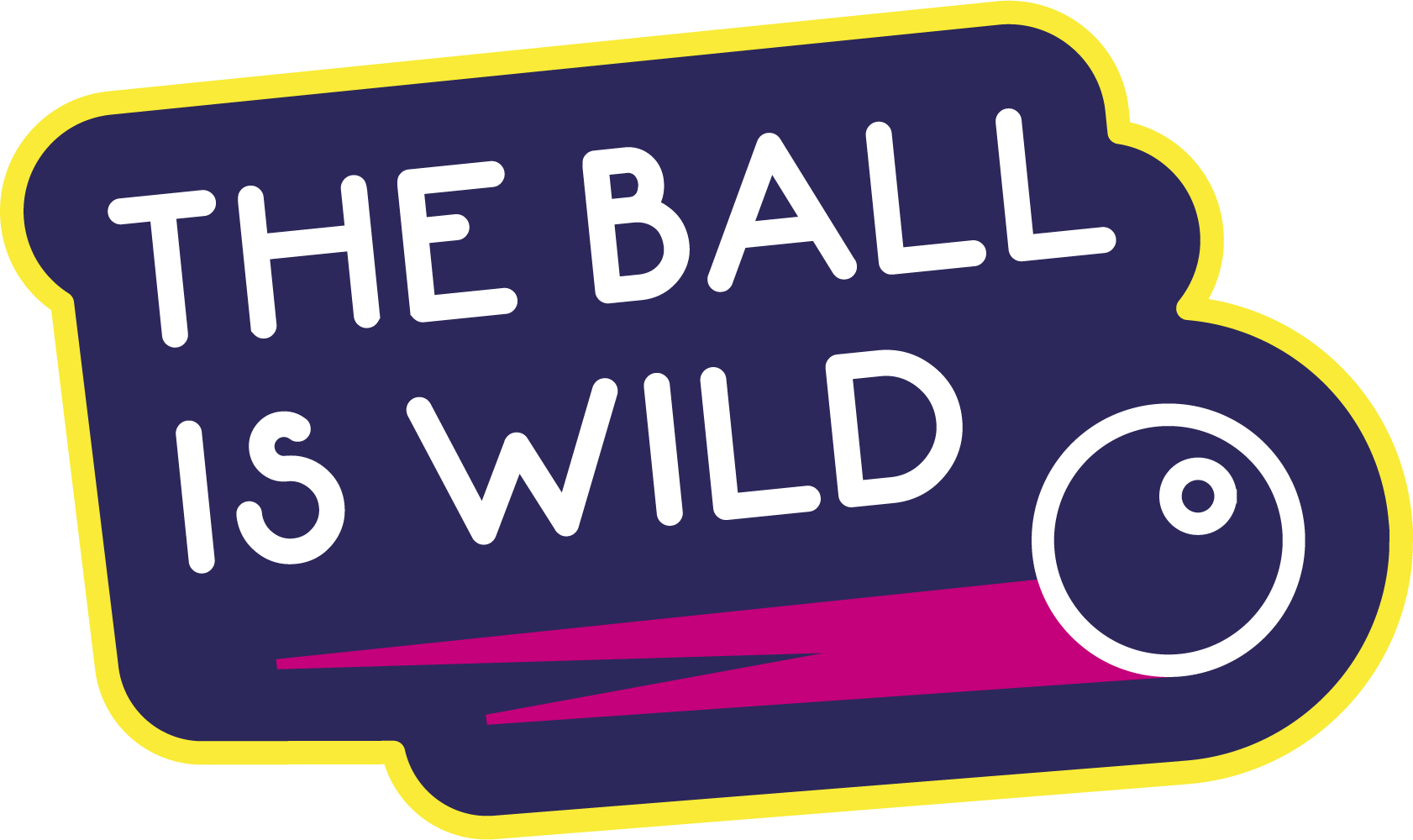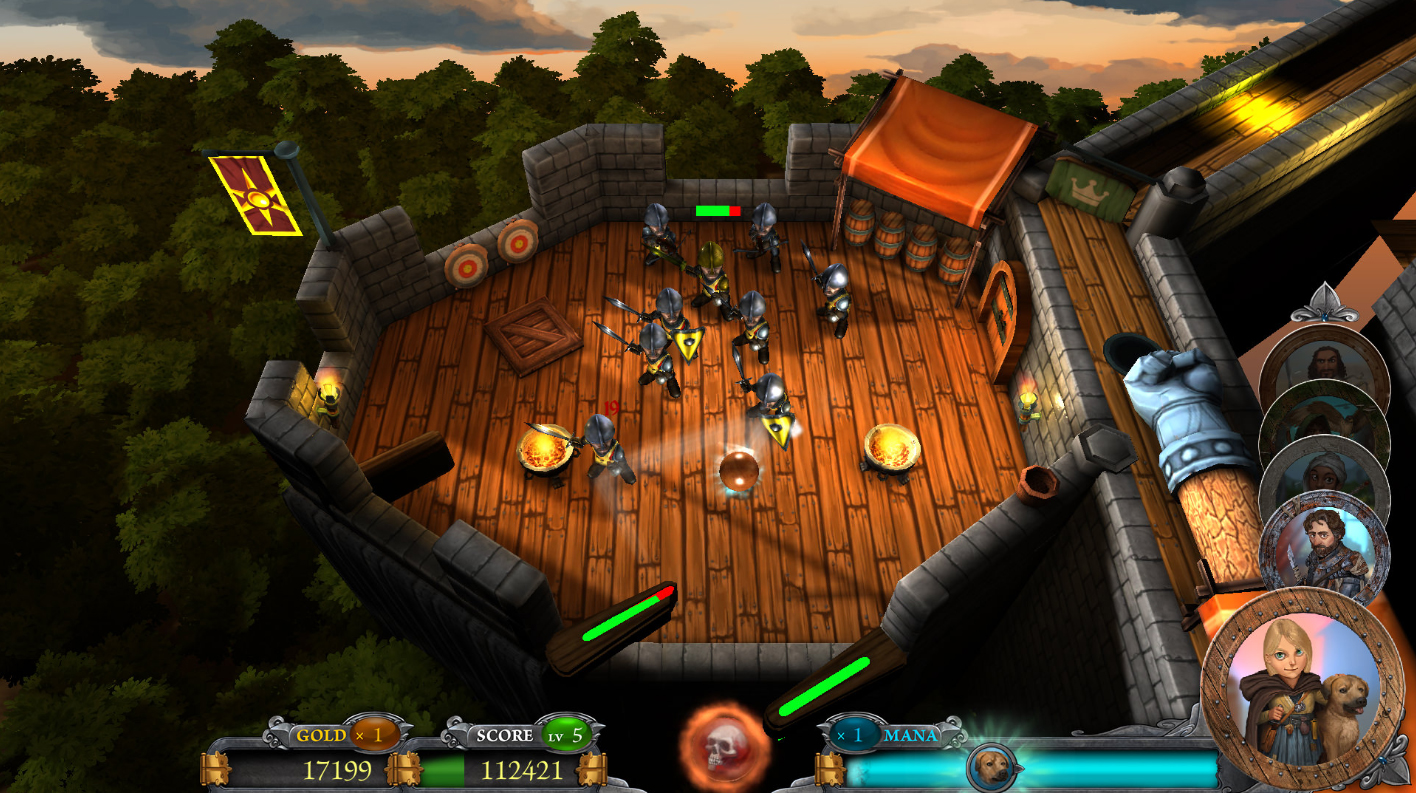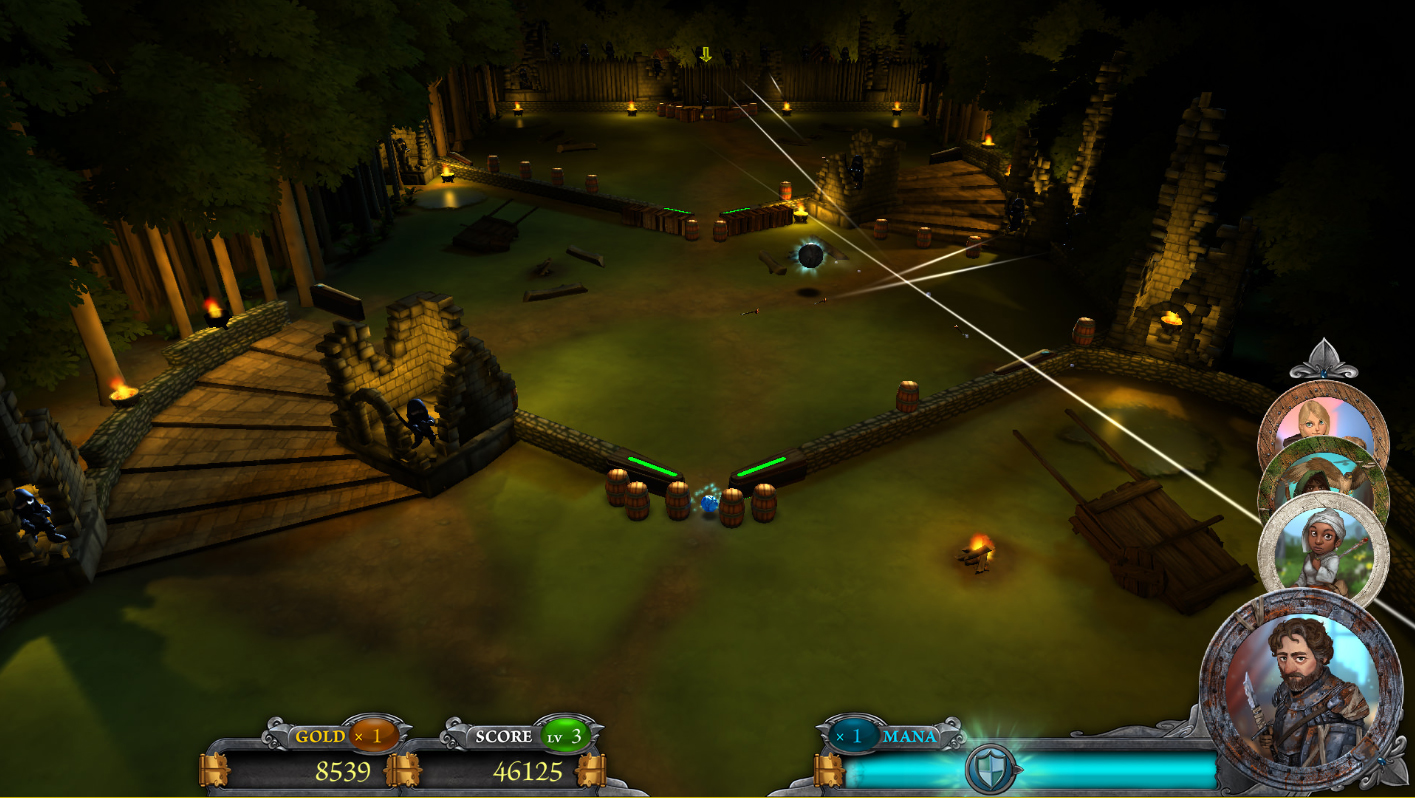 Less than a month ago, a very unique videogame that is a mixture between pinball and a roleplaying game was released: “Rollers of the Realm”. The Ball is Wild did a review about the game which you can find here. We also did an extensive interview with Phantom Compass, the indie developers from Toronto, Canada, who made “Rollers of the Realm”. We talked about the challenge of making a pinball/RPG hybrid, different expectations, playing techniques and why characters on the fringes of society are the most interesting ones.
Less than a month ago, a very unique videogame that is a mixture between pinball and a roleplaying game was released: “Rollers of the Realm”. The Ball is Wild did a review about the game which you can find here. We also did an extensive interview with Phantom Compass, the indie developers from Toronto, Canada, who made “Rollers of the Realm”. We talked about the challenge of making a pinball/RPG hybrid, different expectations, playing techniques and why characters on the fringes of society are the most interesting ones.
Can you please introduce yourselves?
Tony Walsh:
My name is Tony Walsh (depicted on the very right), I’m the company director. I founded Phantom Compass back in 2008. I’d like to introduce a couple of my key team members, starting with Ericka Evans (second to the right) who is our head of production and David Evans (very left) who is our creative director and was our creative director on “Rollers of the Realm”.
What was the initial idea? How did you come up with marrying pinball with a computer role playing game?
David Evans:
Tony invited a group of game designers that have been working in Triple-A to meet up with his team at Phantom Compass and we had actually recently been laid off and thought it might be a good opportunity to get together and work together on a bigger project. Somebody in the room, a friend of ours, came up with the idea of merging the two. He basically showed us “Pinball Quest” for the NES and said: Did anybody remember this? I think this would be a nice project to do over a short period of time and it would be novel and interesting and no one has done it in a while. And we started towards a prototype and it turned out to be working. Every step of the way, we realized that this thing had legs, that the mechanics lend themselves very nicely to RPG pinball. And it ended up rolling into a two and a half year, three year project?Tony Walsh:
Yeah, three years from conception.
What is your relationship with pinball? Do you play pinball regularly at Phantom Compass? Do you have machines at your office? Or was it just like this coincidence where you said: This is an interesting idea, we should pursue this?
David Evans:
It was definitely the novelty and the interest that caught our attention but there were people on the team that definitely liked pinball and were fanatics. Me personally, I actually played very little physical pinball but I grew up on digital pinball. I played the very first digital pinball stuff that came out for the early computers. There is one that came packaged with some IBM clone or something and I played the heck out of that. I played them all the way to the “ZEN Pinball” tables. So I’ve always been a fan of digital pinball but other people played a lot more, maybe Tony. I don’t know how much pinball you played, real pinball.Tony Walsh:
I was starting going to arcades at the end of the era of pinball machines when videogame arcade games started to take over. So I’ve been in that transition era of the late 70ies, early 80ies when things started to change over. But I remember well.David Evans:
But consider that our company isn’t ZEN Studios, we’re not making simulation tables. I think it was good to have a very open mind and not be too pure about the specifics of the pinball experience because we very currently realized that we can take these mechanics that lend themselves to a great combat system. And we right away decided we would not be simulating or try to compete with pinball simulators. So we became less restricted in that way and therefore we just needed to have a general appreciation for pinball and an open mind as to what we can do with it.
This is the interesting thing with pinball and videogames: There is this grudge that pinheads hold with videogames because they say that they are the cause why pinball almost died out and became a niche, starting in the 80ies and 90ies. What’s your take on that and where do you see your audience? Are you catering more to pinball or videogame players?
Ericka Evans:
I think where we figured our audience would be is people who are more game players. We weren’t making this game to cater to hardcore pinball fans but we didn’t want to cut them out either. What we did was we tried to learn what pinball fans appreciate like table design and tricks which we tried to incorporate into our levels. But we really wanted to bring this to a more general audience. Pinball is easy to play, hard to master, so we didn’t want to necessarily cut out people who didn’t like the super-duper hardcore pinball playing.Tony Walsh:
There has been a range, I think, in the audience. We had an expectation early on that the game would appeal mostly to casual game players but as development continued, it really seemed like the audience was broader: It could include casual players but really was more of an mid-core game. There ended up being a fair amount of more detail in it. When we originally designed some of the character statistics and items, we didn’t think that people would be too interested in the numeric values of all that stuff but as it turned out it was quite interesting to people. They wanted to know what all those values were and what all the different things were so they could evaluate their purchases when they were looking at how to spend their in-game gold.
For me, “Rollers of the Realm” ist an experiment because it’s a bold move to do something that is a hybrid between a standard videogame and a pinball simulation. Pinheads might not get into it because it’s primarily a videogame and some gamers won’t really get why pinball is a thing. What were the reactions like when you showed the game to test groups prior to release?
David Evans:
We were showing the game since its prototype stages almost three years ago. Communicating the core concept when you say: RPG pinball, then most people have a very hard time visualizing the gameplay. But once we had a workable prototype it was a lot easier to communicate by demonstrating the game and people understood it immediately. On the surface it appears to be a standard pinball game but as you play or learn more about it, there is more detail that unfolds. We did a lot of audience testing with the game as we moved from prototype into full production and began to work on demos. We spent two GDCs with the unfinished game in various stages talking to publishers, to distributors, to media folks, gamers. And we’ve organized playtesting sessions, we’ve been at lots of different hands-on events and we really listen to what people were saying and we continue to do that, it’s part of the post-launch support for this game. And yes, it’s a risky product for sure. We always run the risk of pleasing nobody. Reviews right now are quite mixed, but there is a majority of positive reviews. Not too many people have experience with this type of game and for most people it seems to be pretty refreshing.
You said it’s not about a detailed simulation of a physical pinball experience which is obvious for experienced pinball players if you play “Rollers of the Realm” for a little bit. An important part of pinball is nudging. If you want to become a good pinball player, you have to nudge properly. Your game doesn’t have a nudge feature included but you instead have this left and right tilting of the ball. How did this game design idea come up and how did you iterate on it?
David Evans:
The main reason we introduced our system – and of course this came over from some work we did on the prototype – is that we wanted to have a certain amount of player agency away from the flippers. And we wanted something for players to do and master outside of just hitting the flippers. We also realized that we were basically searching for nice analogies that exists between pinball mechanics and roleplaying games. We centered on this idea of having a nudge or maneuver ability, edging the ball left and right as you move across the table. And we could make that a coefficient of dexterity where character classes that traditionally are more dexterous would be able to be moved away from the flippers. The analogies also lined up nicely when it comes to defense. High dexterity characters tend to have a defense bonus traditionally which means you’re less likely to sewer because you can save yourself at the last minute and attack where you can maneuver in behind enemies. These characters tend to have backstab bonuses and you can nudge in and maneuver to land directly at the tops of the backs of the enemies. And that was just such a nice thing, we ran with it. It did prove very early on to be interesting for people who were looking for more agency away from the flippers.
Aside from the maneuver ability there is also the fact that your flippers are vulnerable – they can almost be completely destroyed! How did you refine the balancing of this mechanis so that it didn’t become too easy or too hard?
David Evans:
You understand how important the healer is fairly early on and there are some other characters that get healing abilities. But we realized that you have to learn how to use the healer in the right way. Some people like the idea of building up the ability so that you use her just enough to heal your flippers and then pull her out of combat so that you always have her in your backpocket. The barmaid also provides healing and so does the monk and the mage. It’s important to get at least one of those unlockable characters. So there are four characters that can heal the flippers: Two that you always have and then two others that are optional. There is a large percentage of people that aren’t understanding that fast enough or playing it in a fairly casual way. This is the crux of putting out a game that has an appeal to a general audience but that we made for people who are willing to play with different combinations and figure out ways of doing things and replaying things afterwards. Every chapter we have does at least one level where you have to really think about it. It’s usually a boss fight and one other level where you have to ask yourself: Okay, what’s the setup here?
One thing that I miss in the physics system of the game is the bounce pass where the ball bounces off the one flipper to the other one. Is there a reason why this isn’t included?
David Evans:
Oh, interesting. Are you talking about the shot you make when you pass from one flipper to the other by doing a very quick shot off the top kicker?
No, that would be the post pass. The bounce pass is about the player not doing anything at first. The ball just goes down to one of the flippers and, because of the rubber coating, bounces to the other one where the ball can then be trapped.
David Evans:
As for the post pass specifically: We had to actually engineer special physics for that because I did want the post pass in there. But when it comes to the bounce pass: We wanted to make it much easier to intentionally trap the ball with the flipper on the side that you are currently on and actually circumvent the bounce pass. Because we thought it would be easier for people to do that than it would be to do the bounce pass. They would have more command over trapping the ball, especially when it’s coming straight down. In traditional pinball, you usually flip the flipper up and then lower it as the ball is coming down to accept it (Note: an advanced pinball technique called a drop catch). That was to me too advanced a maneuvre, we wanted people who weren’t experts at pinball to be able to switch on the fly very easily. So that was another decision and a reason why we very quickly talked about us not looking for table simulation because we realized that there’d be things that we needed to do for the mechanics of the gameplay like switching characters, and we wanted to make that easier (Note: during gameplay of “Rollers of the Realm”, you can only switch characters while trapping the ball with one of the main flippers). Although one easy way to trap on a flipper is to allow the ball to roll down and onto the other flipper. But that’s only true if you’re in the side shoots. If you’re up the middle, then it’s very difficult in a regular pinball table to accept the ball into a position to trap it. So we didn’t implement bouncy physics quite intentionally to make it easier to switch characters.
The primary thing that you do in “Rollers of the Realm” is combat through hitting enemies. There are also some puzzle levels in between but not so many. Was there a reason why you didn’t stress these puzzles more?
David Evans:
We looked at it as being a break from the combat. We wanted to make sure we stuck to our core mechanic which is the combat. Most of the RPG elements work into combat but boss fights are generally also puzzle boards. We have one boss fight per chapter and then we have one or two puzzle levels per chapter as a break from it. This is the first time we have developed anything like this so I suspect we will take a cue on when and if we make another version or sequel to this game. We will be taking a cue from what people appreciated the most as to whether or not we continue with that 4:1 ratio of combat to puzzle and maybe introduce more puzzle stuff later. But this ratio was the original plan from the beginning and we stuck to it and now we’ll see how it’s received.
When it comes to the story, one thing I noticed is that the female characters are very strong and reflected so that it seems that “Rollers of the Realm” is also a feministic game. For instance, the Rogue is very independent, at one point she refuses to be called “My Lady” by the Knight. How important was this aspect while you created the story?
David Evans:
That’s quite a concious decision we made. What I wanted to do, and we all agreed, is take a fairly familiar story – I mean, we’re not breaking any grounds with the plot itself – and then take characters that we feel are not only marginalized within videogames but characters that are marginalized within a medieval setting as well. So you see people around the fringes: There is an older character, the old knight or the old woman. They are characters on the margins and this younger childlike female character again would be on the margins and then characters from places of non-European descent like a Persian swordsman and a North-African healer. I just find it more appealing to place someone on the fringes of this society and have them find their way and then succeed in this society. We also wanted – also a really concious decision early on – to have half the characters be female. And again, it’s as an opening up to a better representation. It’s evening up in terms of the number of gamers, male to female, and I felt the representation should be that. And then we wanted to play with that. We had to acknowledge in our game that the overarching plot has a female character and where the world feels a certain way about her. And then, there are secrets you find out about this female character and the way she’s been undermined by society. These are all things that we wanted to do – and incidentally in the last couple of months have become more topical as well. But it came not from a place of saying: We want to make a feminist game. We wanted to bring marginalized characters to the forefront and play with that. And it became that, fairly organically, I think.
More narrative driven physical pinball games came up at a late time, in the late 80ies and in the 90ies. Did you also look at those machines and how they tell a story and how their missions and goals are presented as story elements?
David Evans:
I like to use pinball tables as an example when talking about how a narrative can be simplified and how it can work in simple systems. If you look at a pinball table, it’s amazing how much story can be told out of something and how you have to really pay attention to understand what’s going on. You are just fed this information when you play a pinball table. And people who just hit the flippers don’t tend to get as much about the potential story embedded in the table. Also, if you understand the story and the loops that you’re supposed to be playing, you essentially unlock the table by playing it over and over and over again. You start to understand how the table works and that tells a story in itself. But in a way, I don’t think we threaded too much on what I think physical pinball tables do. Our story is told more from the characters, this is the RPG side of it. I think we steered clear of what physical pinball tables do in terms of story and maybe that’s not such a bad thing. Our story is more told through the upgrades that you collect and can buy. If you’re reading what the upgrades are about, you’ll realize that some of the items reinforce the characters. These are the simple mechanics that we tended to use and they are more traditional game things.
Talking about a refreshing but also risky project from a Canadian indie developer, I was baffled to learn that the well-known Japanese games company Atlus became your publisher. How did this relationship come together?
Ericka Evans:
We met up with representatives from Atlus when we were at GDC and they really were interested in the product from Day 1 and thought it was something a little bit different. Their fans tend to be a little bit more hardcore RPG gamers. Our game is a mid-core to hardcore game, so we thought it might be a good marriage.
Are you thinking about downloadable content right now or maybe a sequel to “Rollers of the Realm”?
David Evans:
All of those things are interesting to us. Some post-launch content updates are likely to happen. That’s certainly something that we’d like to see and try to work on. We don’t really want to just launch and then walk away. We would like to make some updates when we can. As far as a sequel goes, I can’t talk too much, but we are always looking for new ways to explore this universe that we’ve created – as simplistic as it is. We love the characters and we want to see them in new games.
“Rollers of the Realm”, published by Atlus, is out now for Windows/Steam, Playstation 4 and Playstation Vita. The Ball is Wild also did a review which you can find here.



